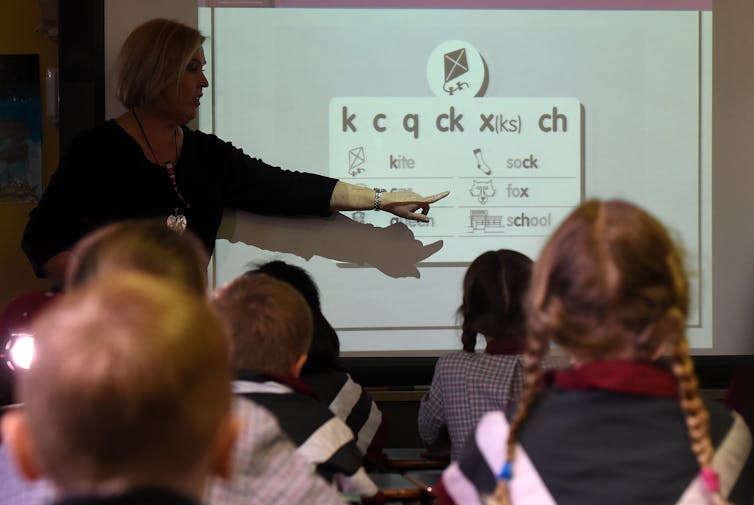The Victorian Auditor-General has just released an audit of Victoria’s A$1.2 billion tutoring program designed to help struggling students post-COVID.
The report found the program “did not significantly improve students’ learning compared to similar non-tutored students” in 2023.
Late last year, a New South Wales Education Department report into a similar program in the state found it had “minimal” effect.
But this does not mean we should dismiss tutoring programs. As Grattan Institute research shows, they can be very effective if done well.
And Australians students need more help. About one in three students in years 3, 5, 7 and 9 did not meet proficiency benchmarks in literacy and numeracy in the 2023 NAPLAN assessments.
When children struggle to keep up with classroom learning, it can spark a vicious cycle. Lack of understanding can lead to frustration and disengagement, which can make learning harder.
What is the Victorian program?
The program is called the “Tutor Learning Initiative” and is designed to provide a short-term learning boost for struggling students.
It was rolled out in 2021 in response to disruptions to schools during the pandemic and is due to run until 2025. More than 1,500 government schools and 600 low-fee non-government schools have been involved each year. In 2023, the initiative involved more than 170,000 students across primary and high schools.
Under the program, tutors – who are qualified teachers – are funded to work with groups of up to five students in tutoring sessions scheduled during the school day.

What did the Auditor-General find?
Beyond the impact on student learning, the Victorian Auditor-General considered four implementation measures in its report: was tutoring timely, targeted to the right students, appropriate to the school context and appropriate to student needs?
It found nearly all schools delivered timely tutoring in 2023, despite workforce shortages.
But fewer than one-third of schools achieved “fully effective practice” on the other measures. Primary schools generally had more effective tutoring than high schools.
The audit concluded the Victorian Education Department should do more to improve schools’ delivery of the initiative. It found the department has data on school-level implementation, but isn’t using it to drive system-wide improvement.
The Auditor-General recommended the state Education Department collects more detailed data on the tutoring models schools use and how much tutoring they offer.
This would help schools to better understand how effective their tutoring has been and help the department to better target extra help to struggling schools. The audit also calls for rigorous pilot studies to help the department and schools to better understand which practices work and in what contexts.
The department has accepted these recommendations in full or in-principle
We know this can work
The findings of this audit are not surprising. Catch-up tutoring can be challenging to deliver, particularly in high schools.
In a 2022 survey of nearly 400 secondary teachers and school leaders, run by the Australian Education Research Organisation, only about half said their school consistently provided catch-up support to students struggling with reading or maths. About one in two teachers were not confident in their school’s approach to helping students catch-up.
But we also know tutoring can be very effective. Studies suggest when implemented well, it can add four months to a student’s learning over a single year. A 2020 systematic review of 96 randomised controlled trials (the “gold standard” for evidence), found consistently large, positive results from catch-up tuition on maths and reading across grade levels.
Even when classroom teaching is highly effective, studies estimate about 20% of students may need additional intensive learning support to develop strong foundational literacy and numeracy skills. These students can benefit from small-group tutoring or one-on-one support.
But we need to get the delivery right. As our research shows, ideally tutoring sessions should be no more than an hour, and be held at least three times a week, over one or two school terms.

What should the government do now?
In a 2023 report, Grattan Institute set out a five-year plan for all Australian governments to embed high-quality small-group tuition in all schools. Along with the Victorian Auditor-General’s recommendations, this would help Victoria tackle underachievement in its schools.
Tutoring is most effective when it is embedded within a broader “Response-to-Intervention” model for teaching and learning.
Under this model, classroom teaching is based on best practice, evidence-informed approaches. Small-group tutoring supplements this. It provides short bursts of additional teaching to help struggling students catch up and stay on track.
The Victorian government should now closely review schools’ capacities to implement this model and identify the most effective ways to help struggling schools.
It should start with a deeper examination of a sample of 25-to-50 schools, examining their approaches to monitoring student learning, the extent to which their teaching is evidence-informed, and whether teachers have access to high-quality assessments, training and materials.
Small-group tutoring in schools is a practical way to help teachers and students. But it is not a magic wand. Students won’t get benefits unless the government gets the implementation right.

